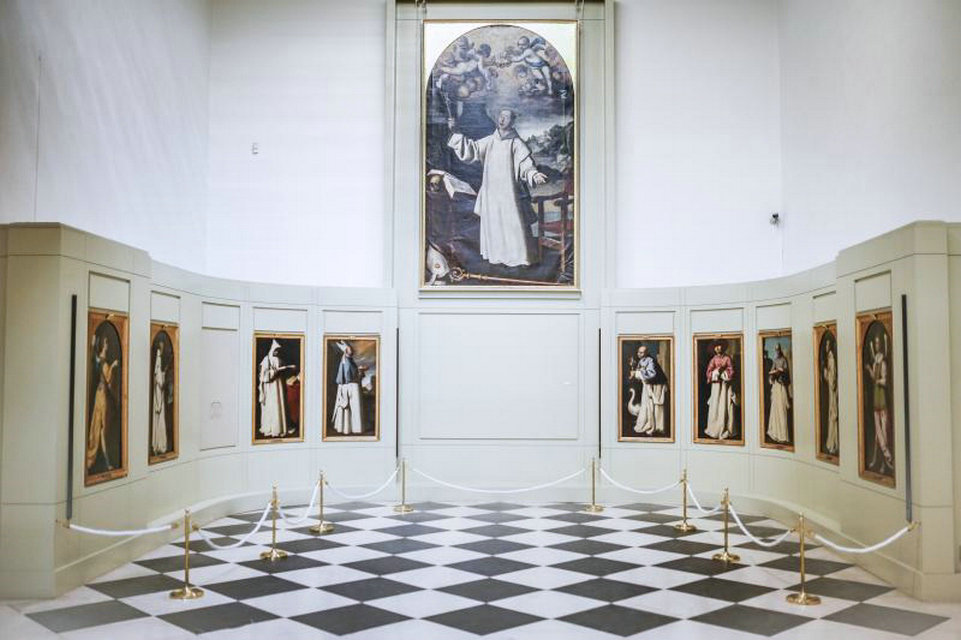The Museum of Cadiz is a museum located in Cádiz, Spain. It was founded in 1970 after the merger of the Provincial Museum of Fine Arts with the Provincial Museum of Archaeology. It is on three floors, archaeology on the ground floor, art on the first, and puppets on the second floor. Entry is free for citizens of the European Union.
The origin of the museum came in 1835, when art was confiscated from a monastery, including paintings by Zurbarán taken from the Charterhouse of Jerez de la Frontera. Other paintings included the works of Murillo and Rubens. The collection grew during the century, due to the city’s Academy of Fine Arts which practised romanticism and neoclassicism. In 1877, after a Phoenician sarcophagus was found in the city’s shipyard, the Archaeological Museum was founded. However, it was not until 1970 that the two institutes, despite sharing the same building, were merged. From 1980, the architect Javier Feduchi planned a reform of the building in three phases, of which two have been completed.
In addition to the 19th-century pieces, the art museum has received contemporary art from the Junta de Andalucía. Its archaeological section has also received donations, particularly of coins. Despite a range of prehistoric findings from Southern Andalusia, due to local history, it has a lack of artefacts from the Middle Ages. The “Tía Norica” set of puppets, used at the Carnival of Cádiz, was acquired by the State.
The Cadiz Museum is located in the Plaza de Mina in the city of Cadiz. It knew different venues throughout its history, like the Alley of the Tint or the Walk of Canalejas, establishing itself in its present headquarters in 1935.
It was built on land disentailed to the Franciscans in the nineteenth century. The building is the work of Juan Daura, inaugurated in 1838 in neoclassical style. The museum after a reform has three sections: Archeology, Fine Arts and Ethnography. Among its prominent collections are: Phoenician anthropophagous sarcophagi, Roman finds (with various objects from Baelo Claudia, Medina Sidonia, Carissa Aurelia, Sancti Petri or Gades) and Baroque paintings, with works by Zurbarán, Alonso Cano, Rubens, Juan Carreño de Miranda and Murillo. At the beginning of the twentieth century there is still a girl doing Eugenio Hermoso’s stockings, which calls attention to his simple and naive realism. And in the room dedicated to this period, the blues of the “Portrait of Micaela Aramburu” painted by Ignacio Zuloaga in 1928.
The complete work of Zurbarán comes from the Cartuja de Jerez de la Frontera. Except “Pentecost” that comes from the Consulate of the Indies.
The current Museum of Cádiz began with the Confiscation of Mendizábal in 1835 and the deposit in the city’s Academy of Fine Arts of a series of paintings from various convents which were seized. Among these works, there is a series of paintings by Zurbarán from the Monastery in Jerez de la Frontera. Meanwhile, throughout the 19th century, the Academy of Fine Arts gathered together a nucleus of works from the flourishing school of Cádiz, with the final echoes of Neoclassicism, Romanticism, Costumbrismo and historical paintings.
The chance finding in 1887 of the male Phoenician anthropoid sarcophagus on the site of the Cádiz shipyards was the starting point of the archaeological collection, and justified the creation of a museum of this type in the city. The museum built its collection from the findings of the archaeological excavations carried out at the time, donations by individuals and objects which the Historic and Artistic Committee for Monuments in the Province, which was set up for this purpose under the laws made by the various liberal governments from the reign of Isabella II, after the 1868 revolution.
The Museum has had several headquarters throughout time, such as Callejón del Tinte or Paseo de Canalejas, and in 1935 was set up permanently in the building in Plaza de Mina, only taking up the ground floor and sharing the building with the Academy of Fine Arts. Nevertheless, Archaeology and Fine Arts were in two separate museums, with different directors and staff.
It would not be until 1970 that both institutions would come together in the current Museum of Cádiz, also including an Ethnography Section. From 1980, work was begun to completely reform the building under the charge of the architect Javier Feduchi. Two phases of this Master Plan have been carried out and the third is pending.
